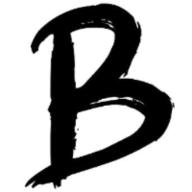如題...(英文作答)
關於Similarities同Differences
thz!!!!!!!!
Halloween同中國鬼節的分別?? (20點)
2008-05-11 9:04 pm
回答 (1)
2008-05-11 9:48 pm
✔ 最佳答案
Halloween, or Hallowe'en, is a holiday celebrated on the night of October 31.[1] Halloween activities include trick-or-treating, ghost tours, bonfires, costume parties, visiting "haunted houses" and carving jack-o-lanterns. Irish immigrants carried versions of the tradition to North America in the nineteenth century. Other western countries embraced the holiday in the late twentieth century. Halloween is celebrated in several parts of the Western world, most commonly in Ireland, the United States, Canada, Puerto Rico and the United Kingdom and occasionally in parts of Australia and New Zealand.History
The modern holiday of Halloween may have its origins in the ancient Celtic festival known as Samhain (Irish pronunciation: [ˈsˠaunʲ]; from the Old Irish samain).[2] The festival of Samhain is a celebration of the end of the harvest season in Gaelic culture, and is sometimes erroneously[3] regarded as the "Celtic New Year".[4] Traditionally, the festival was a time used by the ancient pagans to take stock of supplies and slaughter livestock for winter stores. The ancient Gaels believed that on October 31, the boundary between the alive and the deceased dissolved, and the dead become dangerous for the living by causing problems such as sickness or damaged crops. The festivals would frequently involve bonfires, where the bones of slaughtered livestock were thrown. Costumes and masks were also worn at the festivals in an attempt to mimic the evil spirits or placate them.[5][6]
2008-05-11 13:52:11 補充:
The Ghost Festival (traditional Chinese: 中元節) is a traditional Chinese festival and holiday, which is celebrated by Chinese in many countries. In the Chinese calendar (a lunisolar calendar), the Ghost Festival is on the 15th night of the seventh lunar month.
2008-05-11 13:52:39 補充:
In Chinese tradition, the thirteenth day of the seventh month in the lunar calendar is called Ghost Day and the seventh month in general is regarded as the Ghost Month (鬼月), in which ghosts and spirits, including those of the deceased ancestors, come out from the lower realm.
2008-05-11 13:53:07 補充:
On the thirteenth day the three realms of Heaven, Hell and the realm of the living are open and both Taoists and Buddhists would perform rituals to transmute and absolve the sufferings of the deceased.
2008-05-11 13:53:30 補充:
Intrinsic to the Ghost Month is ancestor worship, where traditionally the filial piety of descendants extends to their ancestors even after their deaths.
2008-05-11 13:53:46 補充:
Activities during the month would include preparing ritualistic food offerings, burning incense, and burning joss paper, a papier-mache form of material items such as clothes, gold and other fine goods for the visiting spirits of the ancestors.
2008-05-11 13:54:14 補充:
Elaborate meals would be served with empty seats for each of the deceased in the family treating the deceased as if they are still living.
2008-05-11 13:54:27 補充:
Ancestor worship is what distinguishes Qingming Festival from Ghost Festival because the former includes paying respects to all deceased, including the same and younger generations, while the latter only includes older generations.
2008-05-11 13:54:40 補充:
Other festivities may include, burying and releasing miniature paper boats and lanterns on water, which signifies giving directions to the lost ghosts and spirits of the ancestors and other deities.
2008-05-11 13:54:53 補充:
The Ghost Festival shares some similarities with the predominantly Mexican observance of El Día de los Muertos. Due to theme of ghosts and spirits, the festival is sometimes also known as the Chinese Halloween, though many have debated the difference between the two.
參考: wikipedia
收錄日期: 2021-04-13 17:44:56
原文連結 [永久失效]:
https://hk.answers.yahoo.com/question/index?qid=20080511000051KK01027

